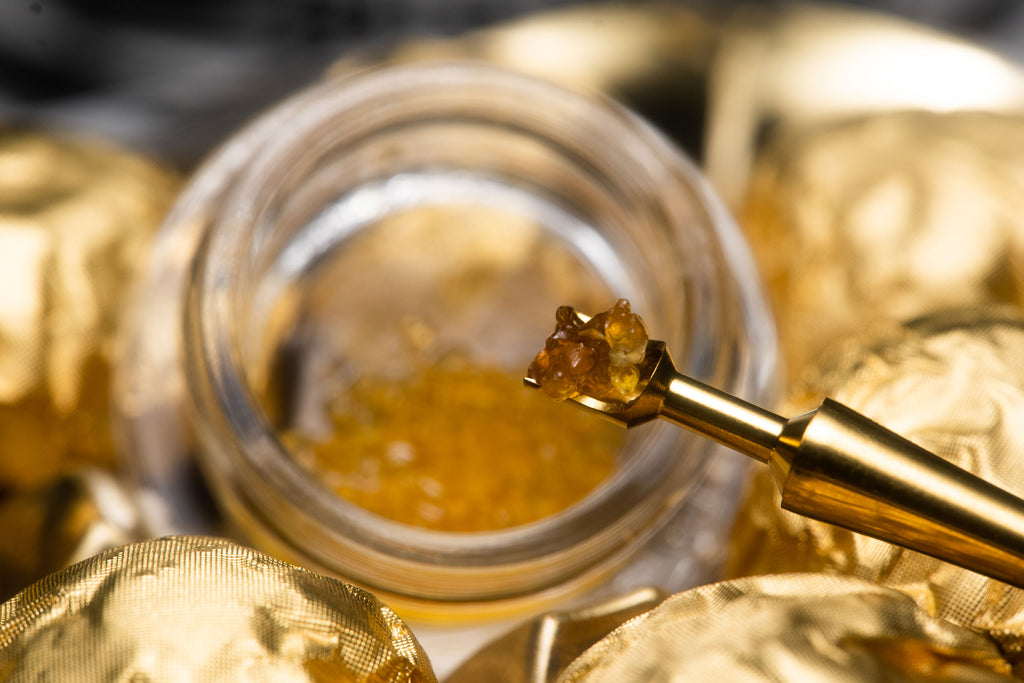
Flavonoids vs. Terpenes: What are the differences and how do they affect what you smoke?
By now, you probably know the difference between an indica or sativa strain of cannabis, but the real stars of the show are flavonoids and terpenes. Though it’s true that using high-quality enails and bangers from trusted retailers like MiniNail can help improve the taste and flavor of your concentrate, these compounds are the real stars of they show and are ultimately responsible for the smell, taste, and color of weed, and produce a variety of therapeutic and medicinal effects that change the way you experience your high. But what are they exactly, and how do they affect the strains you smoke?
In this article, we break down the differences between flavonoids and terpenes, and explain how they work separately and together to give you the best, most beneficial high.
What are flavonoids?
Not unique to the cannabis plant, scientists have identified thousands of them throughout nature, and 20 unique to the cannabis plant. These cannabis-specific flavonoids are known as cannaflavins and each of them interacts with your body in its own unique way. In general, flavonoids are rich with antioxidants, can help regulate cellular activity and protect your body from toxins, and research suggests that they can even decrease your risk of some chronic health conditions.
When it comes to cannabis, flavonoids affect the way we experience weed. They influence the pigmentation—whether your flower is a deep purple or green—aroma, and flavor of the flower and work closely with terpenes and cannabinoids to produce the therapeutic effects many experience when smoking weed. As it stands, flavonoids are one of the most understudied aspects of the cannabis plant, and we still have a lot more to learn about what they do.
What are terpenes?
Similar to flavonoids, terpenes are organic compounds found in plants and are responsible for giving cannabis its scent and flavor. Terpenes are found in almost every flower, herb and fruit, and have both wellness benefits and positive psychological effects.
Commonly used in aromatics and essential oils, terpenes also possess therapeutic benefits and are responsible for affecting the way you experience your high. As of today, there are 100 different terpenes that we know of in cannabis, with each strain showing unique types and concentrations.
How flavonoids and terpenes affect your high
Flavonoids
In addition to influencing the color, taste, and smell of the strain, every flavonoid contains antioxidants that are essential to how they affect your high. Research shows that they have medicinal benefits; below are some of the most prominent flavonoids and the ways they alter your experience while high.
- Cannflavin A: Studies show that this flavonoid possesses anti-inflammatory properties that might be stronger than those found in basic pain relief medicine like Aspirin
- Cannaflavin B: Similar to Cannaflavin A, this flavonoid possess anti-inflammatories and is currently being studied by researchers for their potential medicinal benefits
- Cannaflavin C: This flavonoid is exclusive to the cannabis plant and reduce inflammation
- Kaempferol: Both antioxidant and anti-inflammatory, this flavonoid may be able to help treat symptoms of depression and reduce your risk for heart disease.
- Quercetin: This flavonoid is an antioxidant and anti-depressant in addition to possessing antifungal and antiviral properties.
- Orientin: This flavonoid does it all—an antioxidant, antibiotic, anti-inflammatory, and neuroprotectant—it’s commonly found in cannabis and tea.
- Sylmarin: Last but not least, Sylmarin is a flavonoid with antioxidant and cancer-fighting properties
Terpenes
Terpenes work closely with cannabinoids and interact with your body’s serotonin and dopamine systems. This interaction with the body’s endocannabinoid system can modulate or control your high, and because each cannabis strain contains different terpenes, each strain will deliver a different high. Which is why sometimes you might feel more lethargic after taking a hit, and other times you’ll feel more creative or energetic.
Below are some of the common terpenes and the ways they alter your experience while high.
- Myrcene: Strains that contain this terpene are typically indicas with heavy sedative effects, as it helps reduce inflammation and common pain. This terpene is often found in strains prescribed as a supplement for cancer treatment.
- Linool: This terpene may enhance the cannabinoid’s muscle-relaxing properties in addition to reducing feelings of nervousness.
- Humulene: According to research, this terpene plays a role in helping us regulate our appetites (no more munchies, please).
- Alpha-pinene: The pinene terpene has been proven to be helpful in combating respiratory conditions such as asthma, smoking pinene-rich strains of cannabis may actually help reduce inflammation in the lungs.
- Limonene: This terpene is known to boost the antioxidant effects of THC. It has very strong sedative and relaxing properties, and is often prescribed to patients with depression.
But they’re better together
Both compounds—flavonoids and terpenes—can work individually to produce therapeutic, physical, and medicinal benefits, they work best when combined together. In an experience called the “entourage effect” terpenes, flavonoids, and cannabidiol reach a synergy together to magnify the benefits of each compound.
The takeaway
Both flavonoids and terpenes are pharmacologically active compounds in the cannabis plant that work together and separately to impact your high. Each plays its own unique role in influencing the flavor and smell, whether you’ll feel relaxed or energetic, and we’re only just beginning to understand the full scope of their effects.
Individually, terpenes and flavonoids possess their own significant therapeutic benefits, but together, they experience the “entourage effect” where they work together to create a larger, more beneficial response. This synergy is ultimately what dictates your high. Though a single compound would certainly provide benefits, the effects are more full-spectrum when terpenes and flavonoids work together. The good news is you can reap all of the benefits by using concentrates, which have a larger amount of cannabinoids and terpenes when compared to natural cannabis flowers. By combining your concentrates with MiniNail products, like their controller box and quartz banger, you can regulate the temperature of your dab and maximize the vapor production to give a better flavor and effect.


